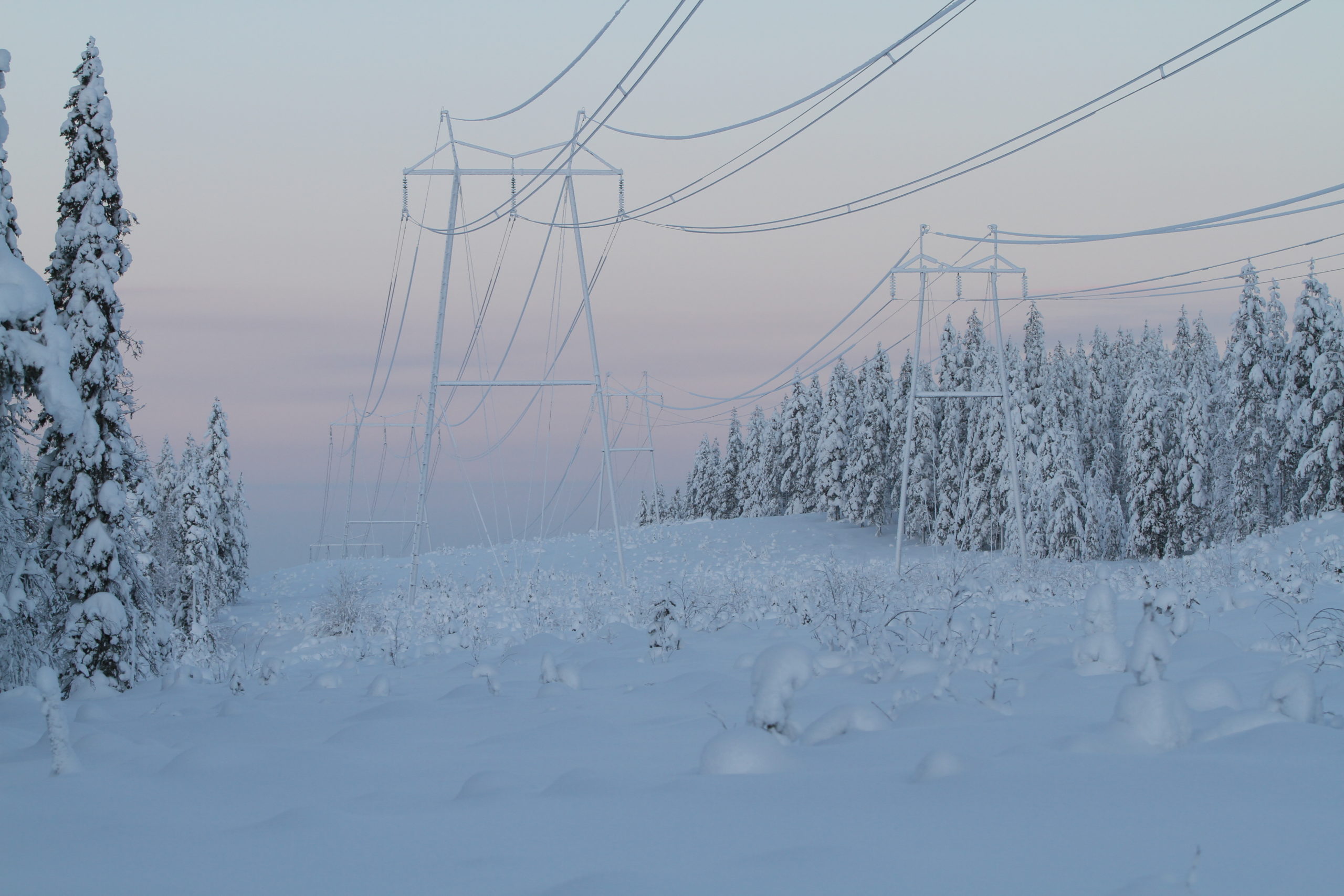Ice load usually occurs between December and February in an area stretching from South Karelia to Lapland but especially in the regions of North Savo, North Karelia, and Kainuu.
Ice load is removed by scrubbing the earth wire with a specially-developed tool. This is generally done by helicopter, but the conventional “man and a rope” method is still used.
Every year, ice load is removed from an average of 100 spans, but there is significant year-to-year variation due to climate change. In the winter of 2018–2019, ice load was removed from a record 1,300 spans covering a total distance of approximately 390 kilometres. Despite this, ice load was the cause of four faults in the main grid. In some winters, it is not necessary to remove any ice load at all.
Fingrid has developed a special tower for ice loads that can withstand frost burdens in excess of the normal design criteria. These towers are used on new lines in areas where ice loads commonly occur.







